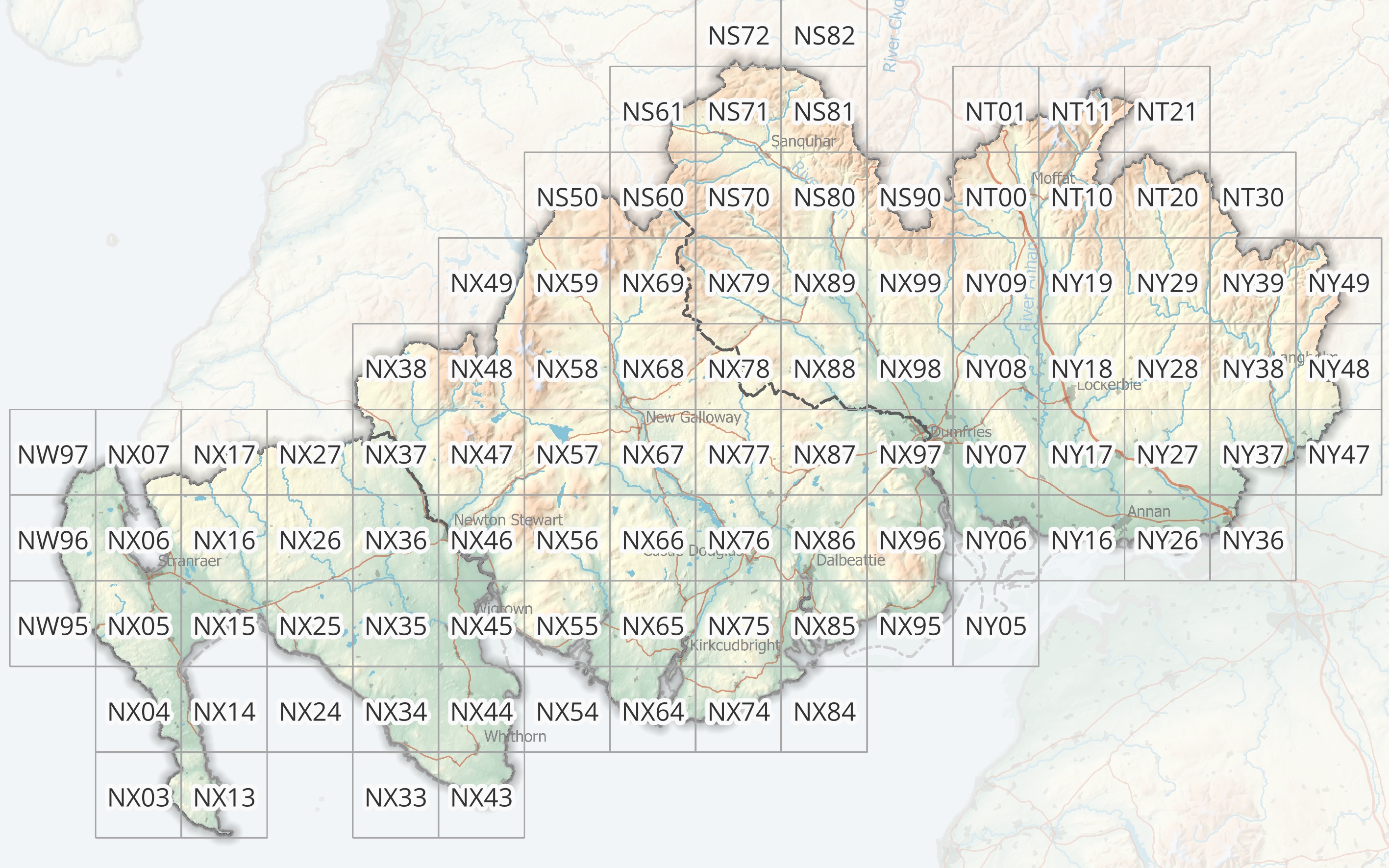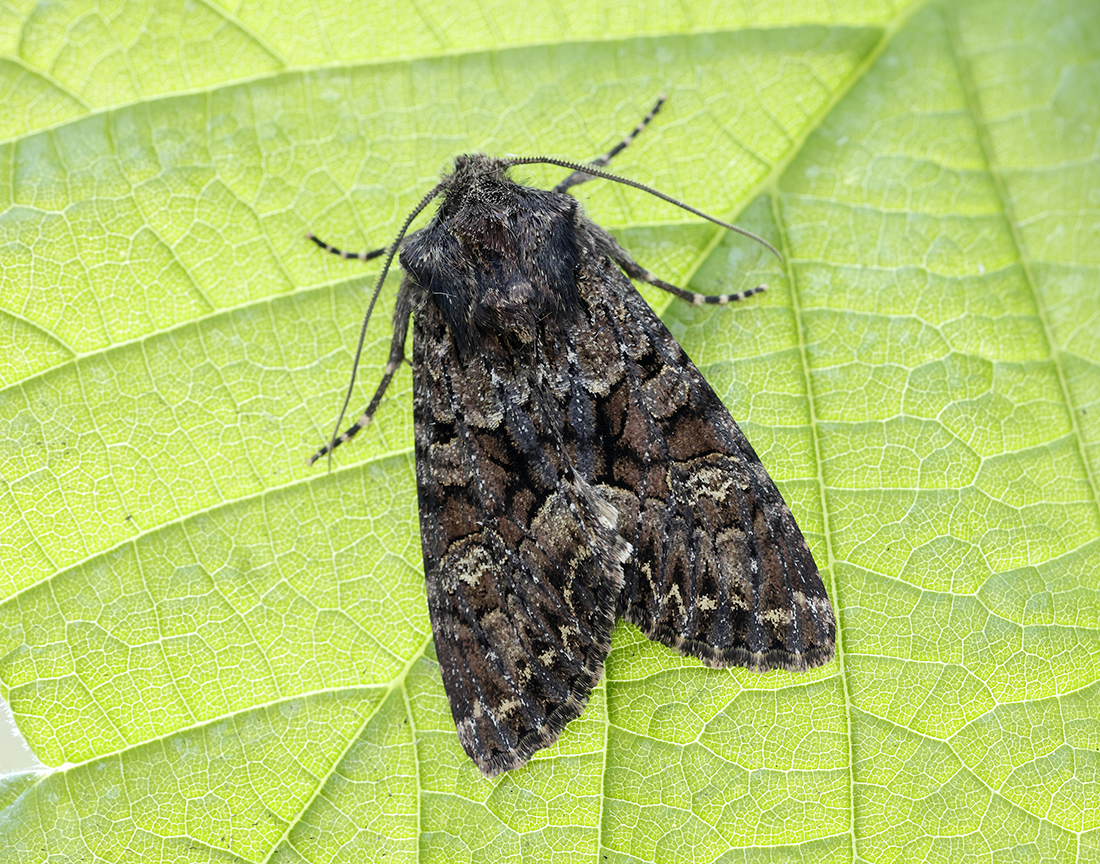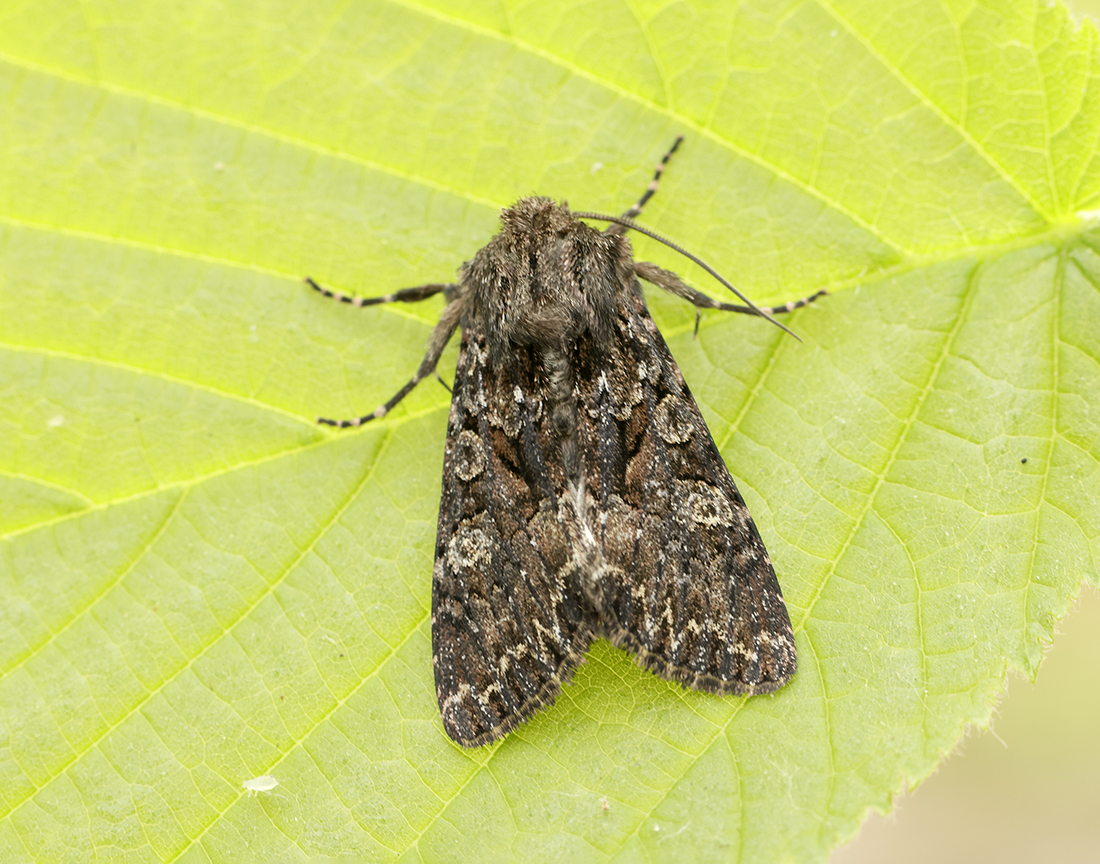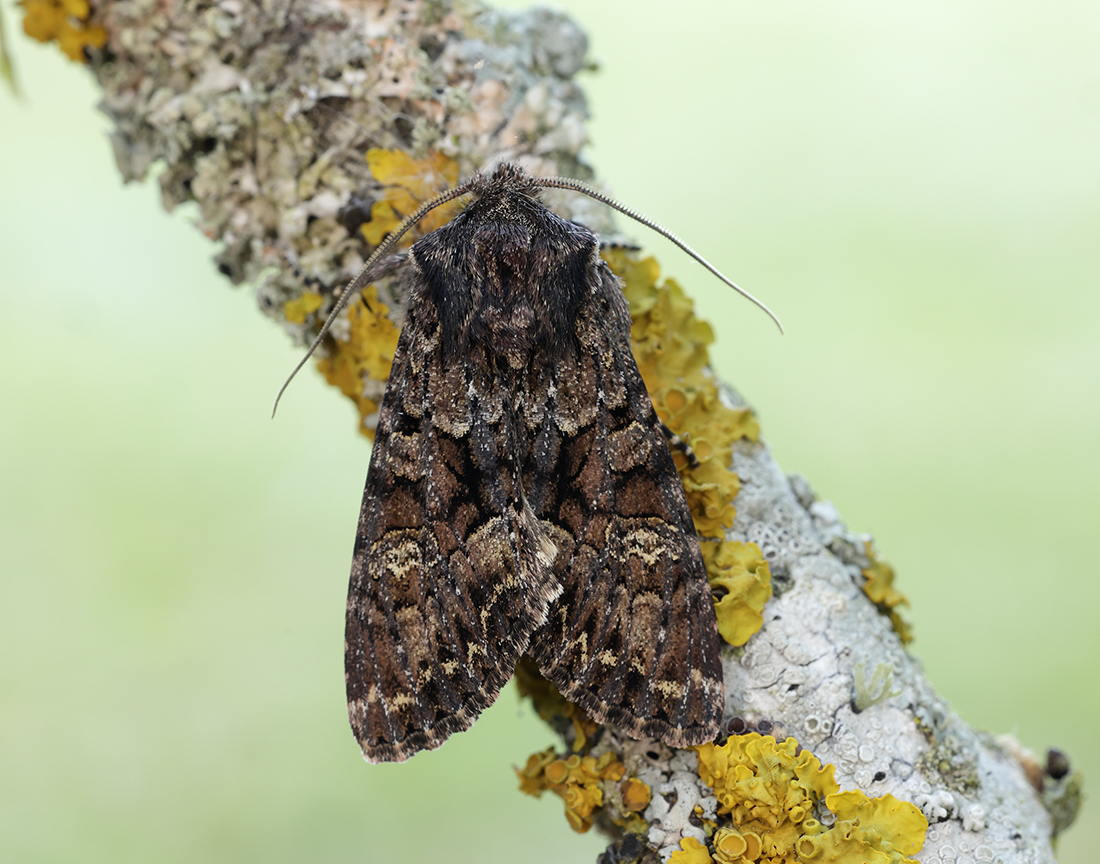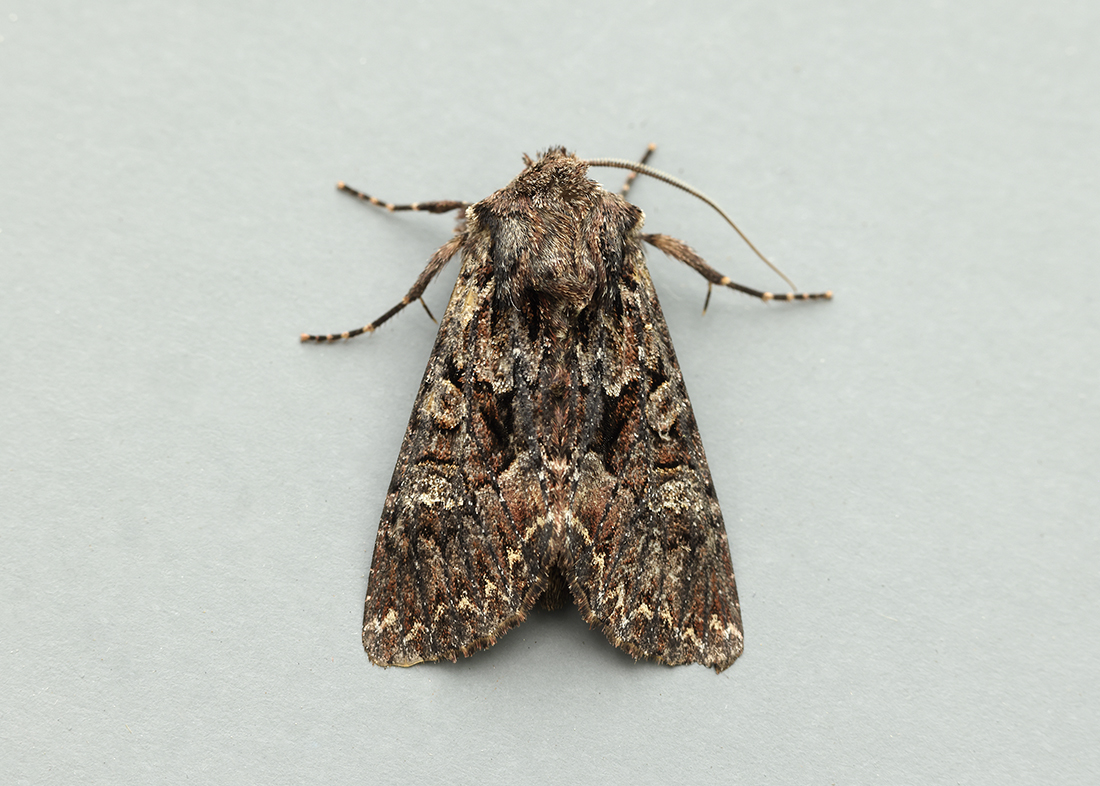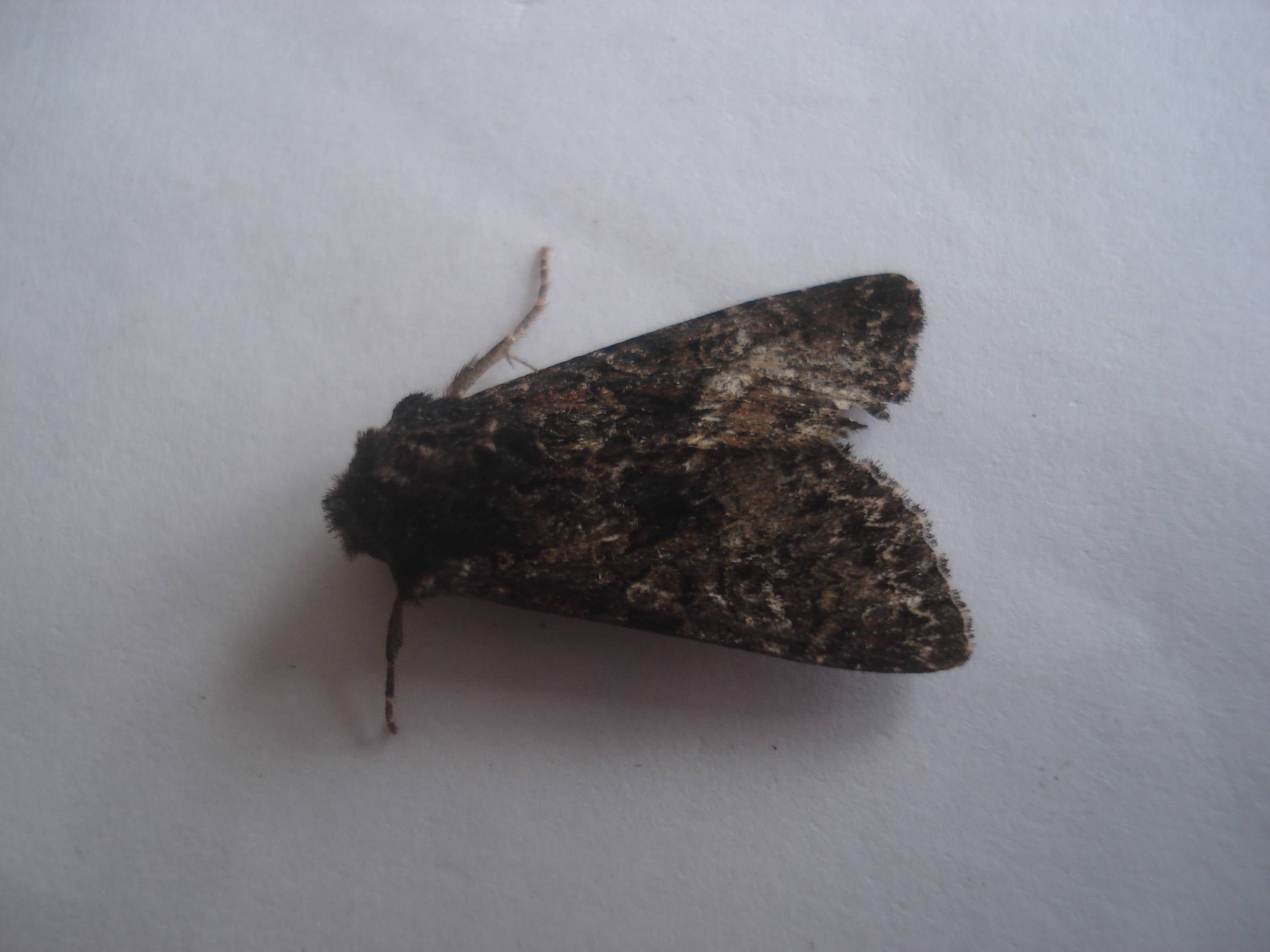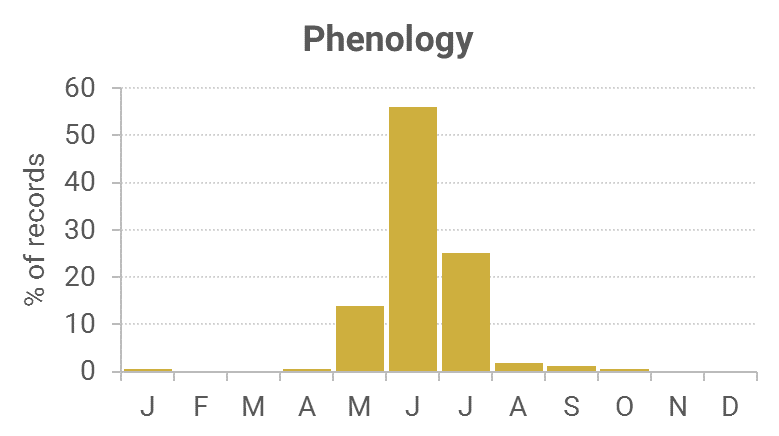Identification
Care required to identify this moth. Similar to Pale-shouldered Brocade and Cabbage Moth both of which have hairy, unlashed eyes unlike this species which has hairless, lashed eyes. The distinctive long eyelashes separate it from all Apamea species.
Recording Method.
Attracted to light, also comes to sugar and flowers.
Life cycle
One generation. Overwinters as a fully grown larva in a cocoon underground, with pupation during April or May. Feeds mainly at night during June to September.
Larval foodplants
A variety of herbaceous plants and woody ones, including Bog-myrtle, Heather and Alder.
Habitat
Various habitats including moorland, heathland and grassland.
History
Somerville (1858) in August of that year had found the larvae of the Dark Brocade near Moffat. Lennon (1863) had only noted it as occurring at Castledykes (VC72). Gordon (1913) had found it common at sugar in the woods around Corsemalzie (VC74), also on honeydew at Alticry on 3rd July 1905, and found that a few came to light. Earliest date was 29th May 1911.
Russell (1944) also listed it as occurring near Gatehouse of Fleet during 1942-43 whilst he was resident there. Sir Arthur Duncan (1909-84) found it during his lifetime at Closeburn and Castlehill, Dumfries.
During the 1960s there were records from the Glentrool area. Followed by just one record from the Rothamsted stations, Newton Stewart recording it in 1976. One record in 1982 at Laurieston is all there is for that decade. But from 1992-2010, Kirkton, Durisdeer and the Grey Mare’s Tail NTS near Moffat have been the most recorded sites. Other widespread sites contributed during this period but the total of records is only just over 100.


